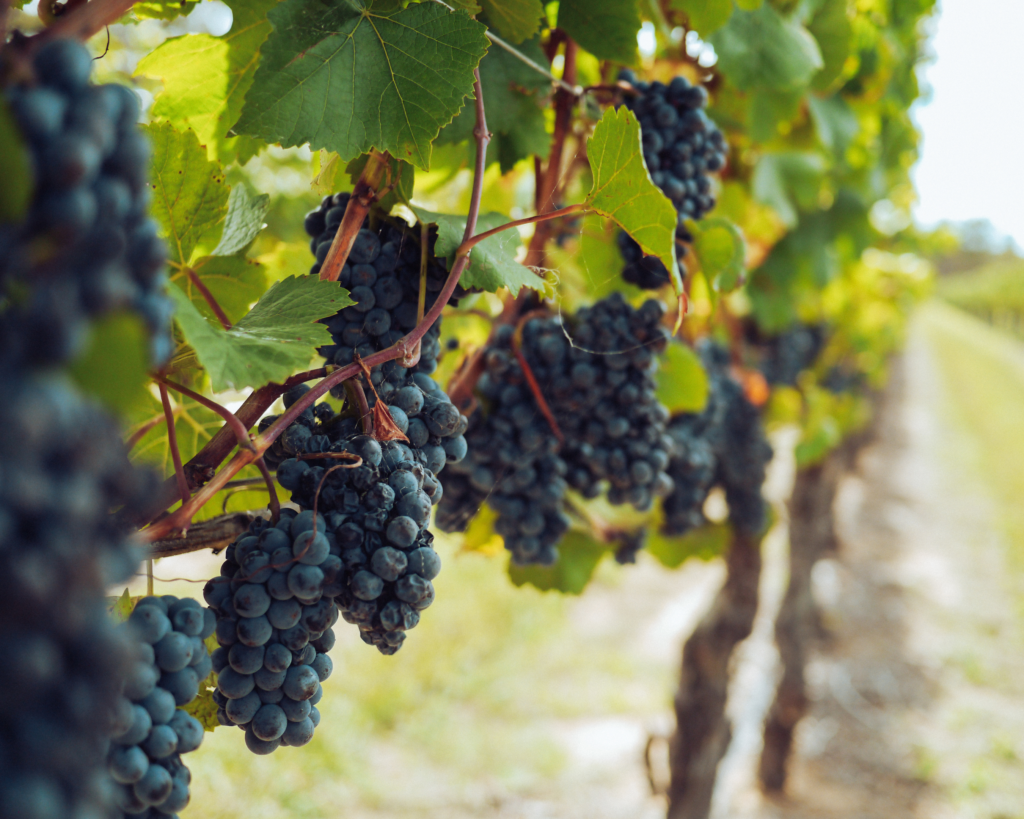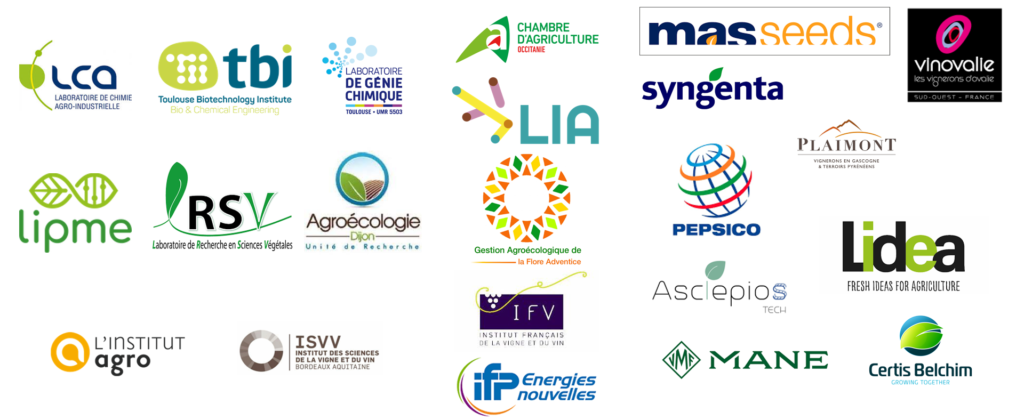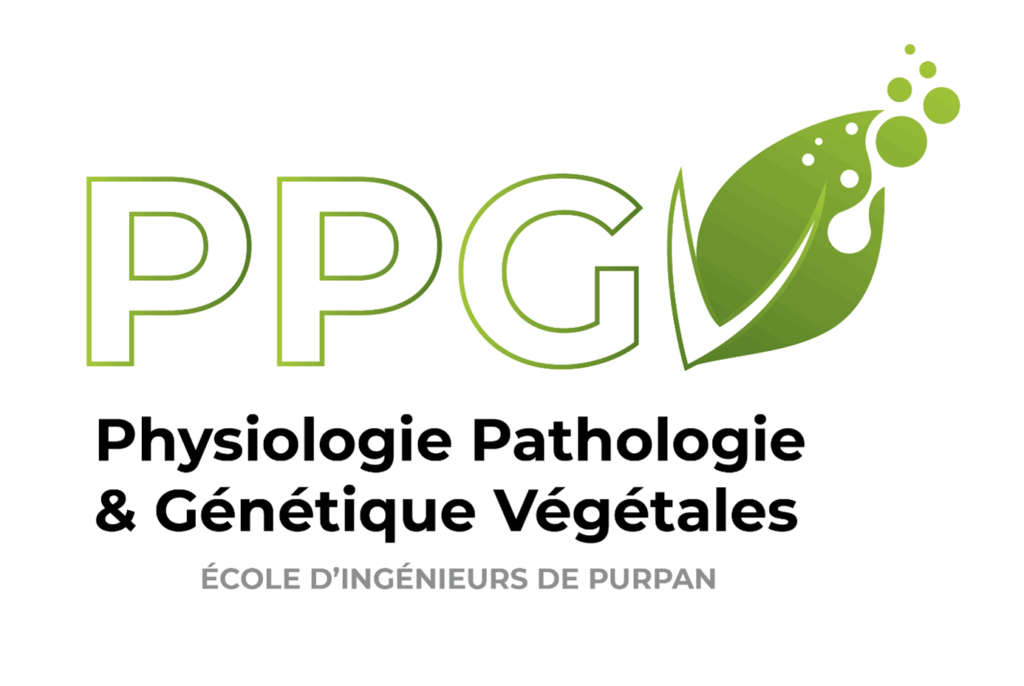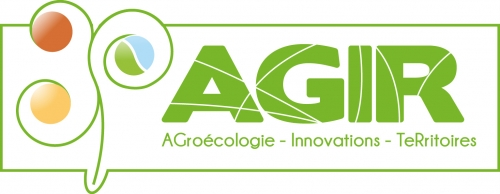In the context of adapting to climate change, the department’s mission is to use agro-physiological approaches to support agro-ecological transition.
The research areas of the Plant Sciences and Agronomy Department are:
Area 1: Innovative cropping systems
Area 2: Pathology and integrated protection
Area 3: Specialized plant metabolites
Area 1: Innovative cropping systems
Research questions
In the context of irrigated corn growing, how does diversification of cropping systems improve multi-criteria performance and sustainability in the face of climate change?
The role of plant-environment-rhizosphere interactions: which root trait(s)?
How does soil limit agricultural production and ecosystem services? What levers of action?
Physical state
Chemical properties
Organic and inorganic carbon input
Organic matter cycle
Major results
• Possibility of maintaining socio-economic performance by reducing the negative environmental impacts of cropping systems
• Weeds are not solely responsible for yield loss – questioning the zero-weed paradigm
• Development of soil organic matter and soil improver quality indicators
• Influence of soil compaction as a limiting factor
• Influence of methanization on the carbon cycle in soils and on their physical, chemical and biological properties.
Key publications
Mirleau-Thebaud V, et al. (2017) Growth kinetics at early stages of sunflower (Helianthus annuus L.) under soil compaction. Journal of Plant Nutrition. 2017. 40:17, 2494-2510
Béghin-Tanneau R. et al. (2019) Carbon sequestration in soil amended with anaerobic digested matter. Soil and Tillage Research 192, 87–94.
Giuliano S et al. (2021) Reducing herbicide use and leaching in agronomically performant maize-based cropping systems: An 8-year study. Sci of Tot Envi 788, 147695
Dayoub E. et al. (2021) Early-Stage phenotyping of root traits provides insights into the drought tolerance level of soybean cultivars. Agronomy. 2021, 11(1), 188
Dayoub E. et al. (2022) Genotypic differences in root traits to design drought-avoiding soybean ideotypes. OCL 29, 26. https://doi.org/10.1051/ocl/2022021.
Deremetz V. et al. (2023). Les relations adventices-culture sont-elles différentes dans des systèmes de culture alternatifs à la monoculture de maïs conventionnelle ? Végéphyl, 25ème conférence du COLUMA, Journées internationales de lutte contre les mauvaises herbes, Orléans, décembre
Pilet L. et al. (2024). First report of Fusarium oxysporum causing damping‐off on Datura stramonium in France. New Disease Reports. 50(2):pp.e12309

Area 2: Integrated pathology and protection

Research questions
How can farming practices reduce pest pressure and associated damage?
Biocontrol
Multi-Service Cover Crops (MSCCs)
Qualitative systems modeling
What are the tissue, cellular and molecular bases of the vine in response to biotic stresses?
Roles in defense (esca)
Understanding how alternative solutions to pesticides work at molecular level (biocontrol, TOA)
Major results
• Systemic model that takes into account all the agrosystem factors involved in damage (wheat, sunflower, vines, etc.)
• Introduction of brassica MSCCs to control the development of telluric pathogens(Verticillium dahliae and Orobanche cumana)
• Analysis of early responses: wood is able to distinguish between the pathogens associated with grapevine esca and adapt its response at molecular level
• Modulation of defenses by biocontrol tools Development of a cellular perception model
Key publications
Robin M.H., et al. (2013). Injury Profile SIMulator, a hierarchical aggregative modelling framework to predict an injury profile as a function of cropping practices,and abiotic and biotic environment. II. Proof of concept: design and evaluation of IPSIM-Wheat-Eyespot, a model that predicts eyespot injuries on winter wheat. PLoS ONE 8, Issue 10, e75829.
Romeo-Oliván A. et al. (2022) Comparative transcriptomics suggests early modifications on hormonal signaling and secondary metabolism biosynthesis in response to Phaeomoniella chlamydospora and Phaeoacremonium minimum by the Vintec® in grapevine trunk. Frontiers in Microbiology 13:835463.
Romeo-Oliván A. et al. (2024) Deciphering transcriptomic and metabolomic wood responses to grapevine trunk diseases associated fungi. Phytofrontiers 4:553-566
Melotto M. et al. (2024) Fighting for Survival at the Stomatal Gate. Annual Review of Plant Biology 75:551-5577
Rakotoniaina, N.F. et al. (2025) Stomatal Movement Examination: A New Model to Reveal Interactions Between Grapevine and Phaeomoniella chlamydospora, an Esca-Associated Pathogen. J Plant Growth Regul. 44:4908-4916
Wojciechowski A., Seassau C., Alletto L., Lamichhane J-R, 2025. Seedling emergence vigor, establishment success, and biomass yield stability of cover crop mixtures compared to pure stands. Field Crop Research, 335. https://doi.org/10.1016/j.fcr.2025.110165
Brevet
Seassau C. et al. (2024). Biocontrol liquid product, process of obtention and uses thereof (Brevet européen n° FR 22306493.2). Institut national de la propriété industrielle (INPI).
Area 3: Specialized plant metabolites
Research questions
The benefits of specialized metabolites for plants and humans
What are the genetic and environmental bases underlying the qualitative and quantitative accumulation of specialized metabolites?
Steviosides (in stevia)
Isoflavones/saponins(in soya)
Rotundone and sesquiterpenes (in grapevines)
Major results
• Analytical innovations (chemistry and sensory)
• Histology of isoflavone accumulation in the seed
• Decoding stevioside biosynthetic pathways
• New glycosylated forms of steviosides
• Ecophysiological conditions conducive to rotundone accumulation (cool and humid)
Key publications
Petit E. et al. (2019) UGT76G1 polymorphism in Stevia rebaudiana: New variants for steviol glycosides conjugation. Plant Physiology and Biochemistry, 135:563-569.
Geffroy O. et al. (2020). May peppery wines be the spice of life? a review of research on the ‘pepper’aroma and the sesquiterpenoid rotundone. OENO One, 54(2)
Baerenzung dit Baron T. et al. (2022) A novel approach to discriminate the volatilome of Vitis vinifera berries by Selected Ion Flow Tube Mass Spectrometry analysis and chemometrics. Food Research International, 111434
Brustel J. et al. (2024) Nondestructive Quantification of Isoflavones in Cotyledons by Near-Infrared Spectroscopy and Potential and Limits for Sustainable Soybean Breeding. Sustainability 16(6):2436
Geffroy O. et al. (2024) How do Syrah winemakers from two different French regions conceptualise peppery wines? OENO One, 58(1)
Paire C. et al. (2025) A novel application of the consumer rejection threshold method to the design of binary red wine blends prepared from traditional and fungus-resistant varieties. OENO One, 59(2)
Contini T. et al. (2025) Classification of Stevia rebaudiana chemotypes through steviol glycosides and their identified malonyl forms by liquid chromatography coupled to high-resolution mass spectrometry analysis. Journal of Agricultural and Food Chemistry, In press

Some of our projects
DESIGN / ASSESSMENT OF AGRO-ecological CROP PRODUCTION SYSTEMS
Technical and economic analyses of field crop systems incorporating low input levels, long rotations, tillage, use of cover crops and integrated protection.
Partners
INRAe, Nataïs, FNCuma
UNDERSTANDING OF METABOLIC PATHWAYS FOR THE ACCUMULATION OF AGRO-MOLECULES OF INTEREST
Research into selection schemes adapted to the local production of high value-added stevia varieties, varietal description, molecular markers, pollen incompatibilities.
Partners
CNRS, PepsiCo, Stevia Natura
Partnerships and collaborations
Our national academic and industrial partners:

International collaboration:





















